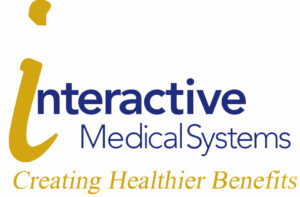Self-Funded Medical Plan Administration
There are two funding approaches for an employer’s health benefit plan: conventional funding and self-funding. In conventional funding the employer purchases a fully insured health benefit plan, the premiums are paid monthly in advance, and benefits are generally inflexible. With self-funding the employer, with the assistance of an agent and Third Party Administrator (TPA), controls rising healthcare costs by customizing a health benefit plan that addresses the healthcare needs of it’s employees and the financial objectives of the employer.
Benefits that are provided in a conventional fully insured program can be included in the self-funded plan or benefits can be customized to cover what is important to employers and their employees. Additionally, with the self-funded plan the employer holds the cash to fund benefits. Instead of sending the fully insured premium to the insurance company, only a small fraction of the premium is utilized for administrative costs and optional stop loss coverage. The employer holds the remainder of the premiums as a claim fund and can invest or utilize them for general business purposes until needed for the funding of claims. The employer retains the funds when claims are less than expected, thus realizing true savings.
The employer, in consultation with their consultant/broker, contracts with IMS for administrative services, to investigate and recommend appropriate plans, and for all other functions necessary to establish and maintain a successful self-funded benefit plan.
Advantages of Self-Funding
There are many advantages of operating a self-funded plan. Over 75% of US employers utilize some form of self-funding for employee benefits. Some of the most common advantages include:
- Elimination of most premium tax. Although the stop loss premium is still subject to state premium tax, the claims fund, the plans largest expense, and the administrative expenses are exempt from this tax; thus, an immediate savings equal to the amount of the premium tax (approximately 2% to 3%) is realized.
- Lower cost of operation. The administrative costs for a self-funded program through IMS are significantly lower than those charged by insurance companies.
- Elimination of carrier profit margin and risk charge. The profit margin and risk charge of an insurance carrier are eliminated for the bulk of the plan.
- Efficient claim processing. IMS consistently provides timely and accurate claim processing.
- Cost and utilization controls. IMS offers access to a variety of preferred provider organization (PPO) networks, disease management and medical management vendors, and data mining, predictive modeling and risk stratification tools that help the employer control costs and utilization. Unlike an insurance company that limits clients to in-house programs, IMS offers programs through a variety of sources, to customize controls to each plan’s needs.
- Improved cash flow. Cash flow is improved because the employer retains money until claims are actually paid. These funds were formerly held by the insurance company in the form of unreported claims and pending claims reserves.
- Return on investment of reserves. The employer controls investment options for the reserve fund. Returns on investments can be used to offset future benefit expenses.
- Control of plan design. The employer has flexibility in plan design. Incentives can be built into the plan to discourage inappropriate utilization and control costs.
- Avoidance of mandated benefits. State regulations mandating costly benefits are avoided because self-funded programs are subject only to federal regulation under ERISA.
- Administration tailored to the employer’s needs. IMS offers a variety of services that are custom tailored to meet the needs of each self-funded plan. Employers do not have to choose a plan off-the-shelf and try to make it fit.
- Risk management effectiveness. The employer may choose to purchase stop loss insurance to limit the amount of total plan liability.
Theoretically, a self-funded plan will be more cost-effective than a fully insured plan because many expenses associated with a fully insured plan are eliminated, and gains from better than expected claims experience stay with the employer. In addition, employers do not subsidize unaffiliated employers with bad claims experience.
Disadvantages of Self-Funding
Self-funding isn’t appropriate for every employer. To attain the advantages of self-funding, the employer must be willing to exercise discipline over eligibility for benefits, actual payment of claims, and benefit design. Even then, self-funding may not reduce costs every year. While stop loss insurance limits employer liability, there is some risk that is not transferred to the stop loss carrier. The management of this risk requires more involvement from the employer in return for potential savings. Through ongoing analysis and creative strategies, IMS helps mitigate these risks for self-funded plans.
